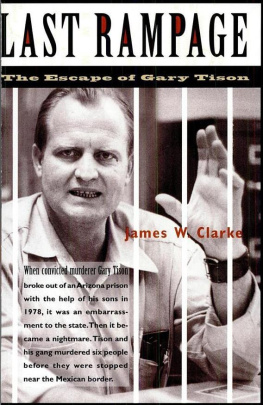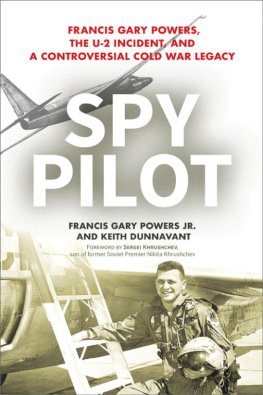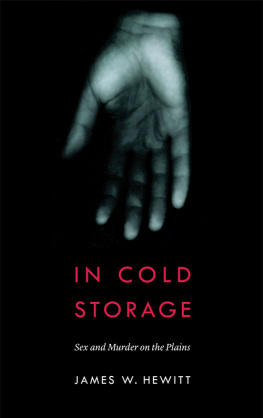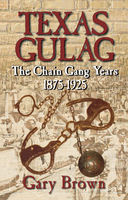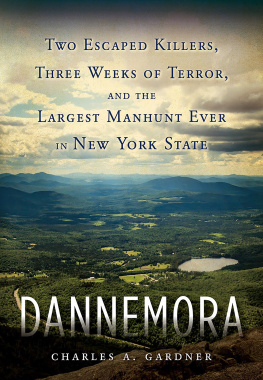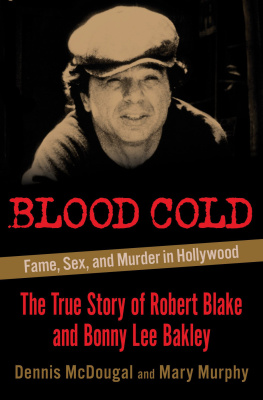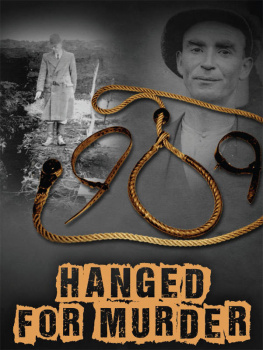
I, thy Lord thy God, am a jealous God, visiting the iniquity of the fathers upon the children unto the third and fourth generations of them that hate me.
Exodus 20:5
I have so many mixed emotions about Gary, ranging from the love I had for him to hatred for what he has done to our sons, and so many other people, that I probably will never know myself just how I feel about Gary.
Dorothy Tison
CONTENTS
Part 1 - Fugitives
""
Part II - Corruption: 1976-1978
Part III - The Manhunt
Part IV - Consequences
PREFACE
In August, 1978, I had a frightening brush with death while camping in southwestern Colorado. Unknown to me, for four days I repeatedly crossed paths with five fugitives - desperate men, two of them escaped murderers - who had killed a family of four in Arizona a few days before, after stealing their car. One night in particular, I experienced a foreboding sense of danger in the unusual blackness that surrounded my campsite near the Dolores River. It was too still. I was unable to sleep, gradually becoming convinced that some malevolent force lurked beyond that impenetrable darkness. Although I didn't know it, a young couple, trout-fishing as I was, had been abducted and murdered that day, their van commandeered by the same five men. A few days later, the couple's belongings were found along the river close to the spot where I had spent the night.
The awareness of how narrowly I had missed having my own name added to the list of victims Gary Tison and Randy Greenawalt killed that summer aroused my interest in the case, which I followed closely in the newspapers. In 1983, I began more systematically to research the story of the prison escape and the last rampage of Gary Tison. This book is the result.
The easiest way to describe the years of research that went into this project is to compare it to assembling a large jigsaw puzzle whose pieces are scattered geographically over an area that included seven western states and extend back in time to the Great Depression. I had the edges and broad contours of the story in mind before I started, but surprises, even astonishment, followed as I began to piece in the more complicated interior. The story was much more complex than I imagined, hinging on bizarre relationships, extraordinary behavior, and astonishing coincidences. I could see how mood and emotion had shaded, then had defined, the reality of many of those involved as much as the events themselves. The psychological landscapes were often deceptive, like the vistas of the Sonoran Desert, where much of this story takes place. Intentions and emotions changed with the angle of light, making interpretation difficult. One could not always be sure whether pieces that seemed to fit together actually did.
The story has its sociological roots in many of the same themes that John Steinbeck pursued in The Grapes of Wrath. The Joads moved west from Oklahoma and eventually reached Kern County, California, where they worked as pickers in the fields. The Tisons followed the road west, worked the same fields, under the same hot sun, for the same low wages that Steinbeck wrote about. Both families struggled to thread their way through the contradictions of dusty, wind-blown poverty in a land of frontier promises and dreams. And the similarities go on. The oldest son, the central figure in this story, however, is not the selfless Christ figure that Steinbeck's Tom Joad was.
This story is about people who moved west a half century too late. It addresses the turbulence and uncertainty of life, after the frontier on the edges of society - the dreary, unromantic marginality of people who traveled west in dilapidated automobiles, not covered wagons; who were called Okies rather than pioneers; who battled not colorful and savage indians but employers, bankers, and landlords. Unlike their earlier counterparts, they did not "win" the West; instead, too many lost out to it. As Oklahoma poet Wilma Elizabeth McDaniel put it, describing the desperation of the Dust Bowl years:
a man could get religion in a
God forsaken
place like this.
And many did. But the same pressures that pushed some into the pews and pulpits of cinderblock churches pushed others into granite-walled prisons and early graves. This is a story about both kinds of people, and the curious - and ultimately tragic - family relationships that developed within the moral vacuum left between authoritarian fundamentalism and lawlessness.
The story is drawn from a variety of sources: official police and court records; interviews with persons directly, or indirectly, acquainted with specific individuals, events, or eras; and newspaper accounts. What follows is based on this carefully documented material, or very tight logical inferences from it. In some instances, I have taken the liberty of reconstructing conversations and events that were described by only one of the parties; in a few others, I have inferred dialogue, without quotation marks, based on the mood and circumstances of specific situations, and my familiarity with the speech patterns and the personalities of the subjects involved. Sometimes I have transposed sentences in statements and remarks people have made. In a few cases, I have cut and combined materials from interviews that occurred at different times, or in different sequences, always however, with care not to alter the meaning or significance of what was said. Occasionally, I did the same with secondary material, such as newspaper accounts - again, I believe, without distorting meaning or significance. All the persons I formally interviewed on tape were given transcripts of those interviews for their own records, with the understanding that editor changes might be made in the transition from voice to print.
When the subject is crime, in particularly heinous crime, as it is in this book, different points of view and different perceptions of how things happened are to be expected. There are many reasons to lie, or shade the truth, some of them well intentioned. I made every attempt to take such differences into account before reaching my own conclusions. I did this, whenever possible, by considering and weighing information from a variety of sources, instead of relying solely on any single source.
Beyond this conventional resource, I have spent a good bit of time retracing old trails, looking and listening in the places where events occurred - experiencing a specific time of day, or night, or a particular season - in order to reconstruct, as best I could, the circumstances of life and death in this story. Throughout, I have tried to be truthful.
LAST RAMPAGE
Prologue
The Escape:
July 30-31, 1978
In times past, Florence, Arizona, was a thriving little town. Yet Florence still recalls the faded styles and moods of the era of two-lane travel and independent ownership. If it weren't for the McDonald's golden arches, the Circle K convenience store, and the late-model pickups parked on the streets, Florence would look like a photograph of one of those lonely western towns depicted in Life in the 1940s. About five thousand people live in Florence. There are only four stoplights in town, and three of them blink.
The center of town is dominated by the spire of the old Pinal County Courthouse. Built in the last century, the three-story brick structure sits at the edge of a modern complex of asphalt and tan stucco in which the county's affairs are now conducted. Apart from these buildings, the town still remains a lot of the dusty, sun-bleached authenticity of the old southwest. On unpaved backstreets Mexican adobe buildings - some with cracked plaster exposing the mud and straw bricks and saguaro ribs of the last century - stand next to mobile homes in sunlight that filters down through the branches of gnarled mesquite and tamarisk trees.
Next page
